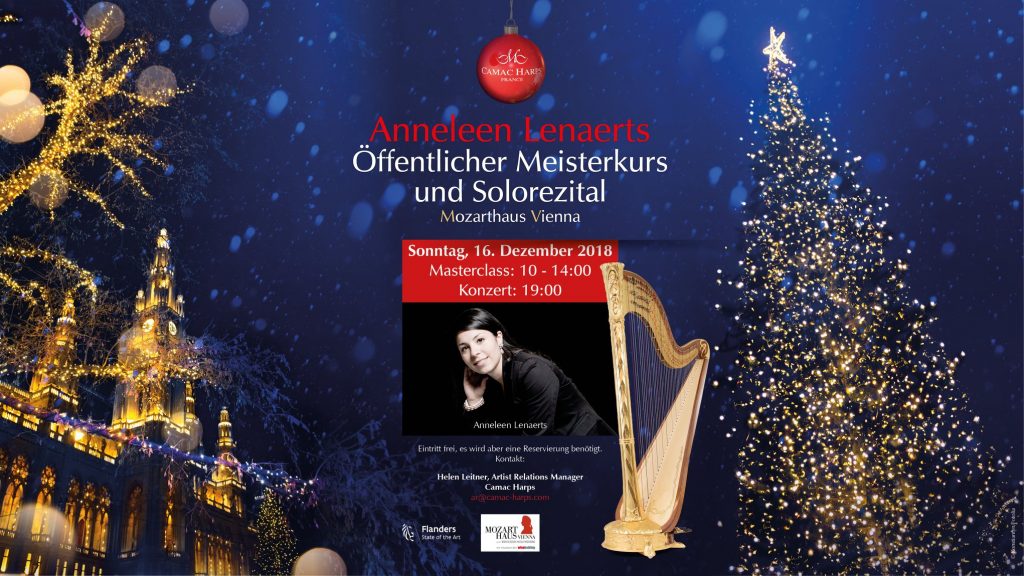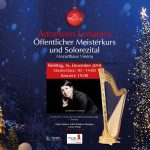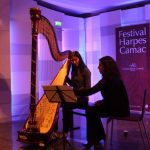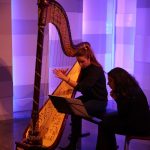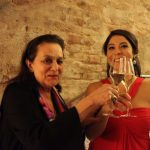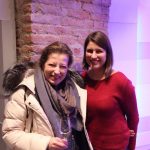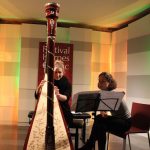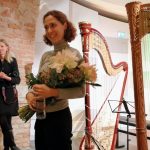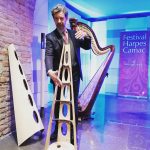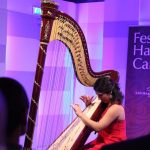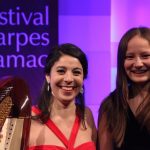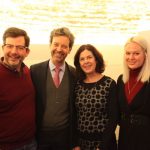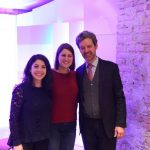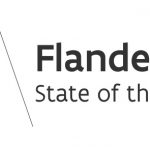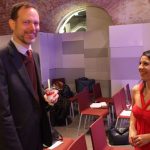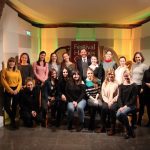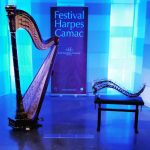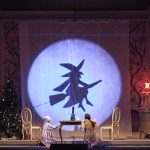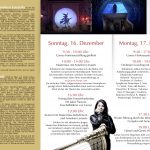Camac Blog
Vienna Christmas Weekend, December 2018
Latest
December 20, 2018
Many musicians, and certainly all of us who work in music sponsorship, are forever going on to anybody who will listen about how music, particularly classical music, needs more public attention. To visit Vienna feels a bit like entering parallel universe, because music is everywhere you turn. You can look out of Mozart’s windows in the Domgasse 5, on a view almost unchanged since the 1780s. Inside the unparalleled splendour of the Vienna State Opera, the busts of past composers stand, dignified, beyond your head: not just Mozart, Haydn, Beethoven and Wagner, but also Spohr, Boieldieu, Dittersdorf and Spontini (who married Sébastien Erard’s niece), all part of the tradition this city celebrates like none other. Not that Vienna only looks to the past: it is a melting-pot of old and new, across all genres and – at the centre of Old Europe – amid a babble of languages, cultures and intertwining narratives. It is the home both of the Strauss Waltz and the Freudian dream; of Baroque gorgeousness, verdant Jugendstil, and what Ada Louise Huxtable deemed the “genius and contradiction” of Wiener Moderne. When the Konzerthaus was opened in 1913, the Concertverein commissioned a new work by Richard Strauss for the occasion, a premier followed by Beethoven’s 9th.
It was underneath the apartments in the Mozarthaus Vienna, where Mozart is thought to have spent the happiest years of his life, that we set up our harps for two beautiful days of concerts and workshops, conceived by Anneleen Lenaerts. The idea was to offer students some intense and high-level classical study, within a larger context of Vienna’s musical splendour. We began with a public masterclass, given by Anneleen, featuring five students who had auditioned via video to play. Only video: no biographies, no recommendations, and no discussion of whose teacher is who. Congratulations to Hannah Senfter (Austria), Erszébet Jenei (Hungary), Mayte Pardo (Spain), Julia Dietrich (Germany) and Marcelina Dąbek (Poland), who performed works by Glière, Andrès, Hindemith, Liszt and Scarlatti.
In the afternoon, Camac President, Jakez François, gave a talk about how our harps are made. The wood for our soundboards, the soul of any harp, comes in fact from high up in the mountains near Salzburg, from PEFC sustainable forests famous for the quality of their tone wood. Austria has the oldest sustainability laws in the world: it has been the law for over three hundred years that you must plant more wood than you cut.
We had a chance to hear our masterclass participants again in the evening concert; they formed a wonderful first half before Anneleen herself took to the stage. Her interpretation, particularly, of J.S. Bach’s Chaconne from the Partita no. 2 in D Minor has become a signature piece: nobody plays it like her, and it is never forgotten by those who have heard it. We are very grateful to David Maenaut, General Representative of the Government of Flanders in Austria, for his co-support of Anneleen’s stunning recital. Where sponsors work together, the results can be more powerful. Returning to the idea of wider contexts, it isn’t every day that a harpist is one of a country’s most distinguished living musicians.
The following day, Anneleen was joined by her colleague and Co-Principal Harp with the Vienna Philharmonic, Charlotte Balzereit. A very large group was waiting for her class on orchestral excerpts: this is an art unto itself, and one not to be underestimated if you are serious about winning auditions. Most of the students present knew this already, and we were impressed by their concentration and preparation throughout a long and intense session. Sitting at the back of the hall was Helga Storck, one of the authors of the orchestral excerpt book everyone in Germany and Austria grows up with, and who had joined us for the weekend.
We were then treated to a private tour of the Vienna State Opera, kindly led by André Comploi, Head of Press. This was a very special opportunity, and we are very grateful to Mr Comploi for his time and expertise. We were guided through the splendid halls at the front of the house, and then backstage, into the orchestra pit, up to the roof (where, if you’re playing the stage music there, you can peer through chicken wire onto the vast auditorium below you), and even onto the stage! The auditorium has a capacity of nearly two thousand, and from the stage to the back is four times as large again. The opera is a repertoire house, meaning that it plays around seventy productions a year, and never on consecutive nights. To manage that, not only does everyone perform as a rule on no rehearsal (unless the production is new), but there has to be an enormous space to store the sets. These are then swapped in and out nightly via enormous hydraulic lifts, which require so much power that the house has two of its own substations. To create beauty and magic on stage, you need a vast human and technical machine behind the scenes.
How else to conclude the weekend, than with a night at the opera? And what better choice at Christmas, than Humperdinck’s ‘Hänsel und Gretel’! Adrian Noble’s production delicately balances the fairytale’s traditional elements, with flittering video installations and fantasy staging. The effect is one of magic realism: fun for children, food for thought for adults. Most fairytales teeter on the line between the gruesome and the lovely; they threaten the same things that tragedies do, but fortunately turn out well. This is why children enjoy them, safe in the knowledge there’ll be a happily ever after.
Tuesday morning saw a bang back down to reality for the Camac team, when we locked ourselves out of the Mozarthaus while heaving a box of harps through the snow. Some plaintive shivering and calling up to Mozart’s unhearing windows followed, worthy of the Little Match Girl, before we were rescued: but all was also well in the end. We left Vienna inspired and moved by the richness of our experiences. It’s not easy to get a big group of musicians together at Christmas time, but somehow it happened, and we were also delighted to be able to see many old friends, and also make new ones. It was a privilege to be able to work with Anneleen Lenaerts on the realisation of her project.
- Working with the students in masterclass
- Anneleen Lenaerts
- with Helga Storck
- Anna Verkholantseva, Veronika Lemishenko
- Charlotte Balzereit, Anneleen’s colleague and Co-Principal Harp with the Vienna Philharmonic, coaches students on orchestral excerpts
- Charlotte Balzereit
- The students from the morning’s masterclass also shared the stage with Anneleen at the evening concert. Bravo to everyone!
- We were also happy to see our friends from Harp Column magazine
- Anneleen Lenaerts and Veronika Lemishenko with Camac President, Jakez François
- Anneleen Lenaerts, Helen Leitner
- Many thanks to David Maenut, General Representative of the Government of Flanders in Austria, for his kind support of Sunday evening’s concert!
- Photo: Wiener Staatsoper / Michael Pöhn

